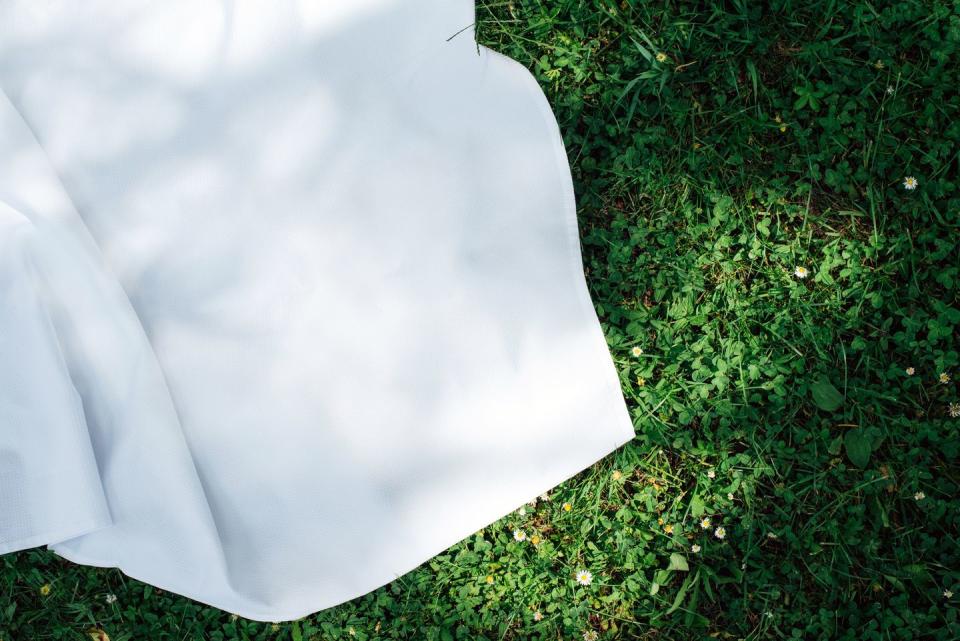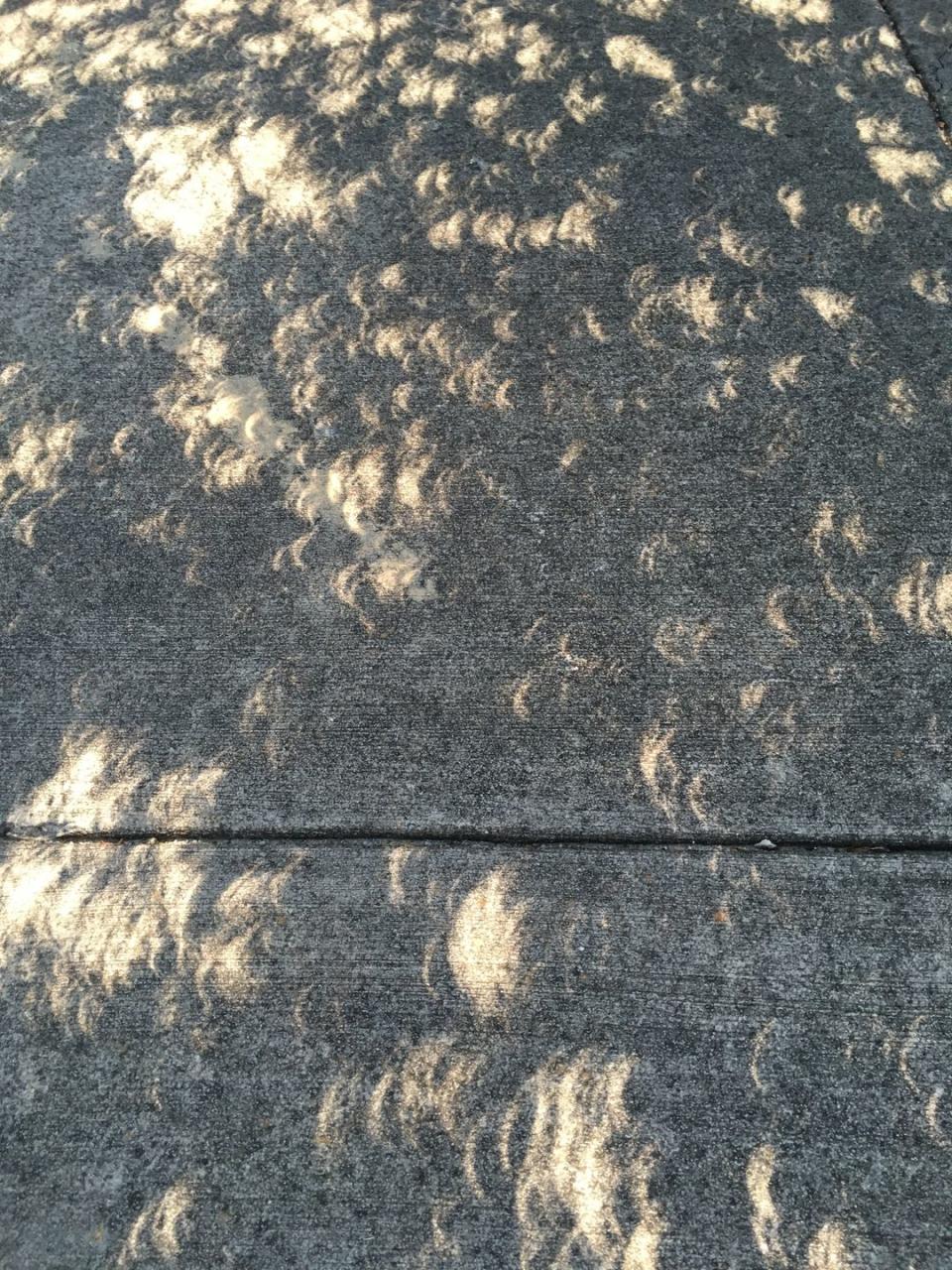How to See Rarely-Captured Shadow Bands During the Solar Eclipse, According to a NASA Scientist

It's rare these days to see something not already captured on camera millions of times. The total solar eclipse phenomenon known as shadow bands—wiggly, rapidly moving bands of light and dark that can appear on flat, white surfaces about 30 seconds before and after totality—is one of those things.
"(Shadow bands) are a wonder to see and are difficult to see. They are very low contrast, an ephemeral experience that is kind of a visual whisper," said Dennis L. Gallagher, PhD, of the Heliophysics and Planetary Science Office at NASA's Marshall Space Flight Center in Huntsville, Alabama. "Of course, that is immediately followed by totality, which is an immense, awe-inspiring display of the Sun’s corona."
Also called shadow snakes, shadow bands are famously difficult to capture on camera or video, though not impossible. (This video taken in Nashville during the 2017 total solar eclipse is one of the most clear videos I found.)
What are shadow bands?
Physicist Johnanan Codona offered a theoretical explanation for shadow bands in 1986. Dr. Gallagher helped me understand the theory in laymen's terms:
Random temperature variations in our atmosphere cause turbulence. Those pockets of slightly cooler and warmer air can also act like optical lenses when encountered with a very narrow, sharp source of light—such as the sliver of the crescent Sun near totality during an eclipse. As this sharp, narrow light encounters temperature variations in the atmosphere, it scatters, creating shadow bands on the Earth's surface. The bands are oriented in the same direction as the Sun's crescent, and they appear to wiggle or drift with the wind.

It makes sense when you think about it—the atmosphere affects our visual experience all the time. "If you're looking on the highway in the summer, you see shimmer in the air above the highway as heat comes off the pavement," said Dr. Gallagher. And our twinkling stars? "If you were out in space, they would just be bright points of light. No twinkle."
The tiny sliver of sunlight that occurs at daybreak, as well as during the last moments of sunset, can also create the sharp, narrow light necessary for shadow bands if there is a clear view of the horizon. Dr. Gallagher relayed an anecdote about a fellow researcher who lives in a spot with a little elevation and a great view of the horizon. "He gets this (shadow bands) every day," he said.
How can you see shadow bands during a solar eclipse?
There is no guarantee, but if you live in or are visiting one of the places in the path of totality across the U.S., you can improve your chances of seeing shadow bands during the total solar eclipse on April 8. Clear skies and relatively calm air? Your chances are good. Clouds or haze? That will kill the effect, said Dr. Gallagher. Now, here's the part you can control:
"What you're looking for on the ground or on the side of buildings or cars is anything that has kind of a bright, whitish surface, because that is reflective. Shadow bands are subtle and low-contrast, so if it's on a dark surface, it's going to be a lot harder to see," he said. Additionally, "The white surface ought to be facing the anticipated location of the Sun when it is in totality."
Safety tip: While you do not need solar eclipse eclipse glasses to observe shadow bands on the Earth's surface, you DO need them to observe the solar eclipse at all times except during the brief minutes of totality.
A grassy field is not optimal for seeing shadow bands, which is exactly where Dr. Gallagher and his small team of student researchers were during the 2017 total solar eclipse. A southwest Kentucky bean field on a clear day offered exceptional eclipse observing conditions. To watch for shadow bands, they laid out a white sheet flat on the ground and weighted it at the corners.
You can also use a white poster board, or—hear us out—a white picnic blanket because April is a great time to pack an outdoor feast.

If you see shadow bands, here's a piece of advice: Enjoy them in the moment because your eye is really good at seeing the low contrast bands on a light surface, said Dr. Gallagher, but cameras are not.
Before editing, the shadow bands captured on video by Dr. Gallagher's research group were invisible on screen. "It was really frustrating, actually, because I'm watching the video that (my student recorded) and you could hear her in the background saying, 'We have shadow bands!' … but you couldn't see a thing on the video until I did some processing." Even then, the video did not come close to the in-person experience.
What other cool shadows can you see during a solar eclipse?
Shadow bands may be elusive but they are not the only cool shadow game in town during a solar eclipse. If it is sunny during the eclipse and you are near a shady tree, each and every space between the leaves act can as a pinhole (just like a pinhole camera), projecting the image of the eclipse on the shaded ground many times over!

You Might Also Like

 Yahoo Sports
Yahoo Sports 
